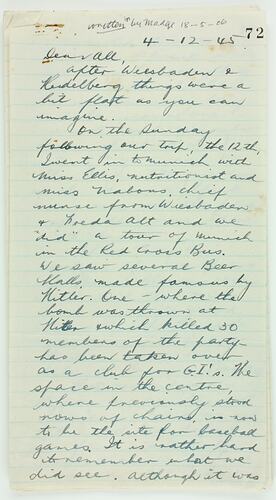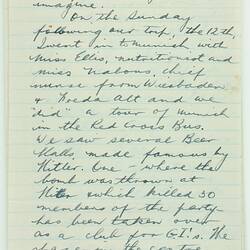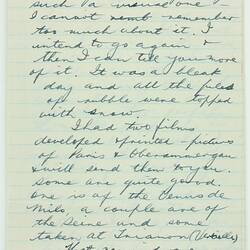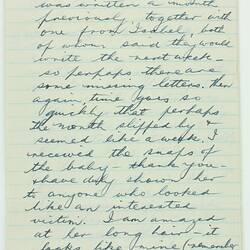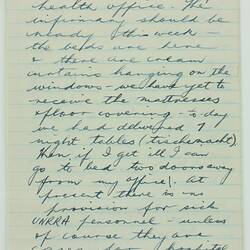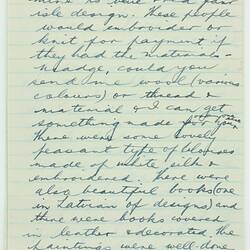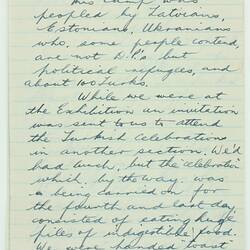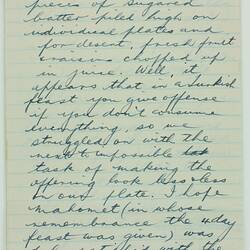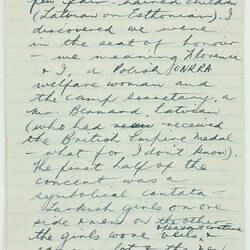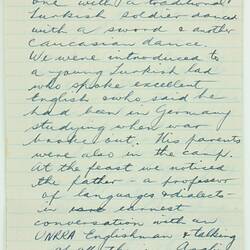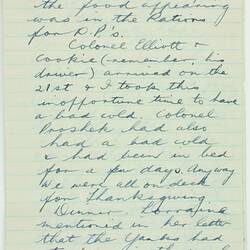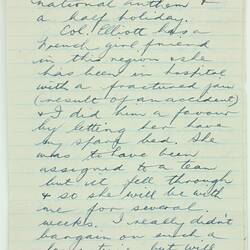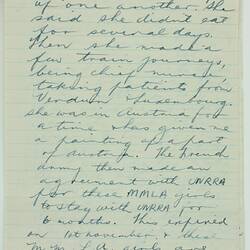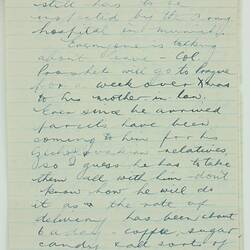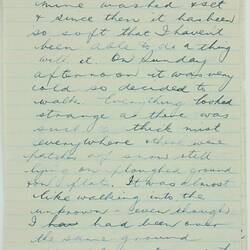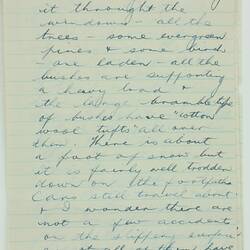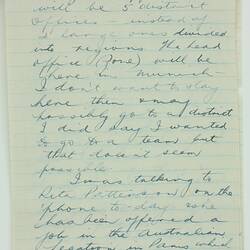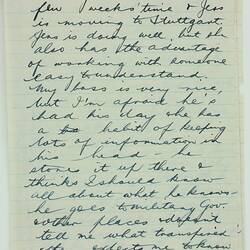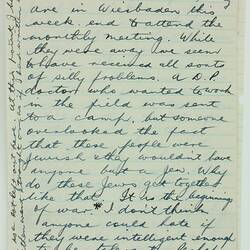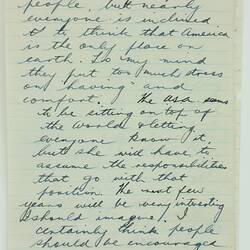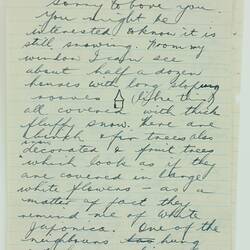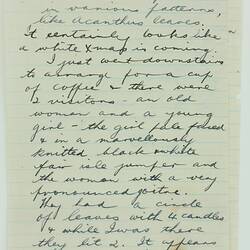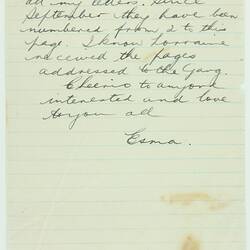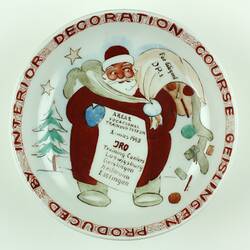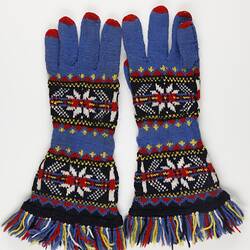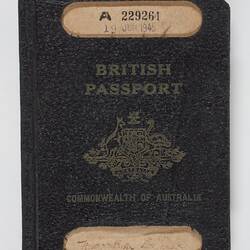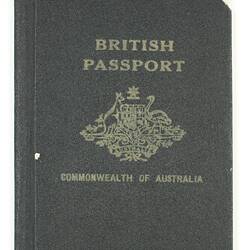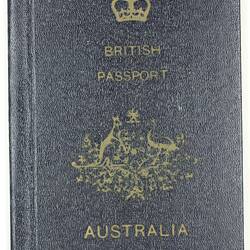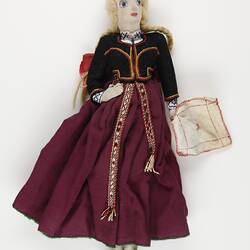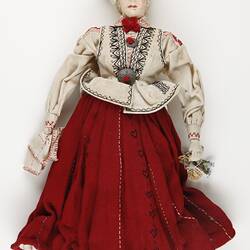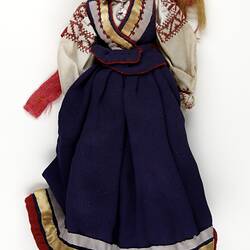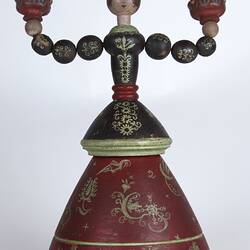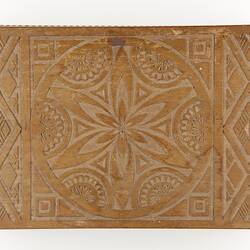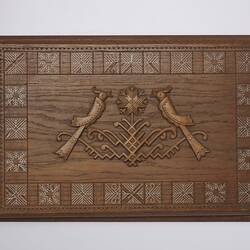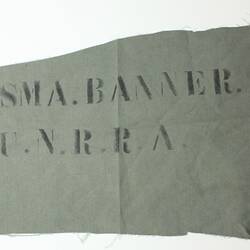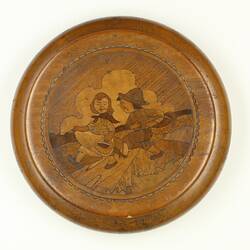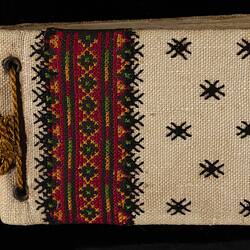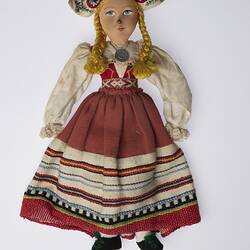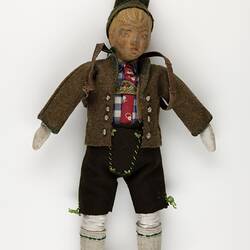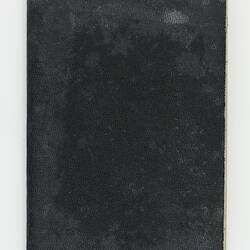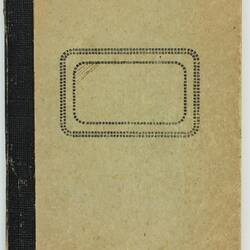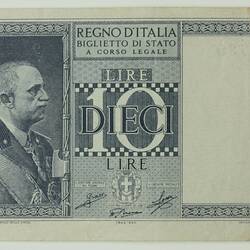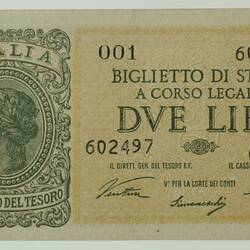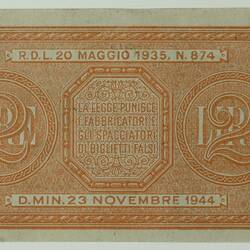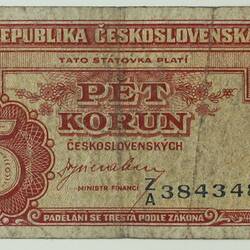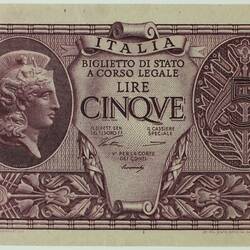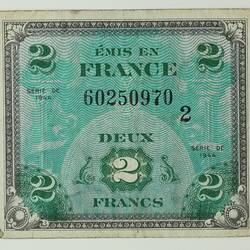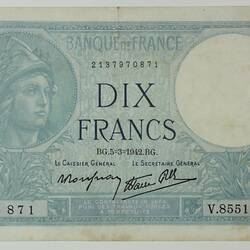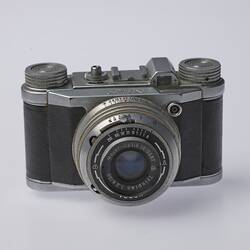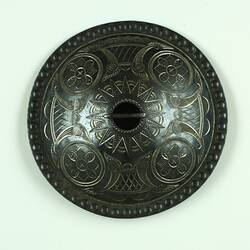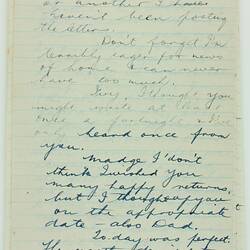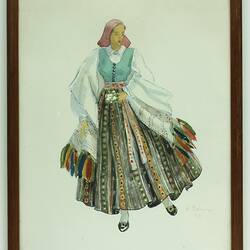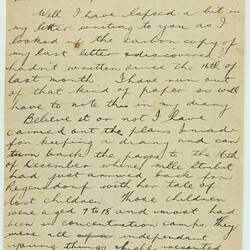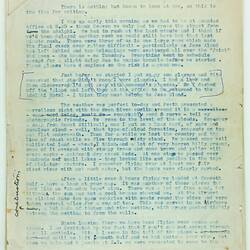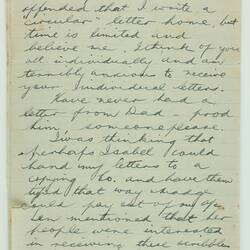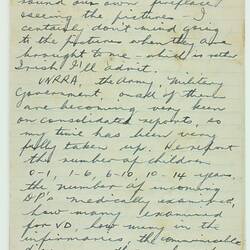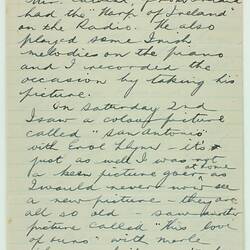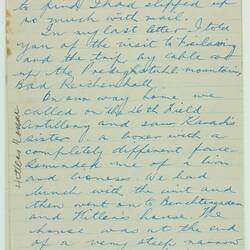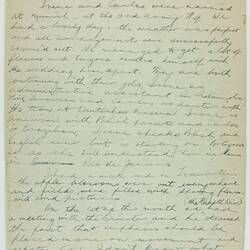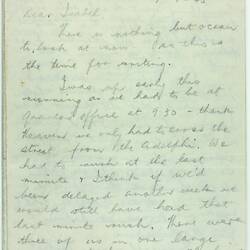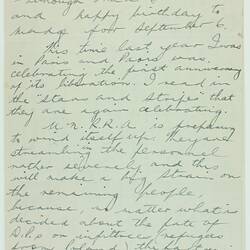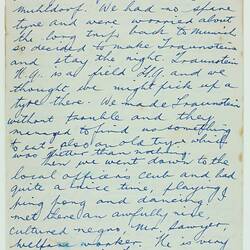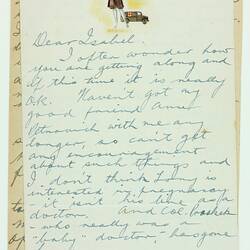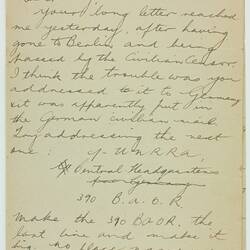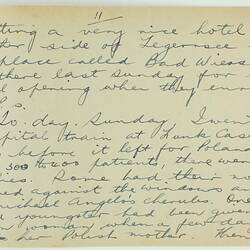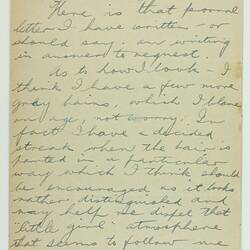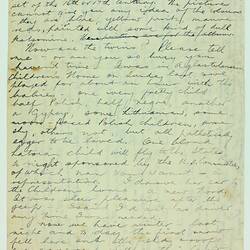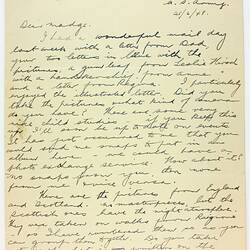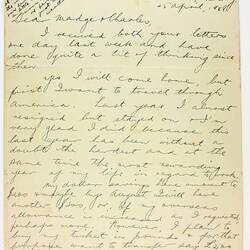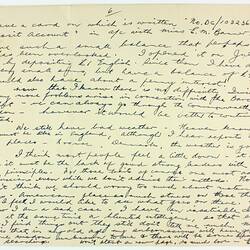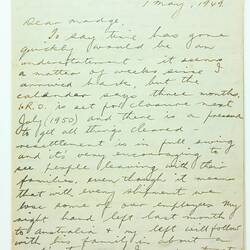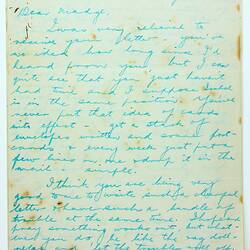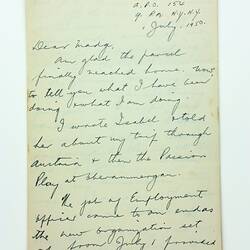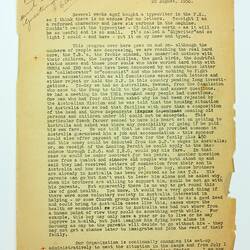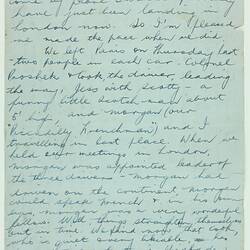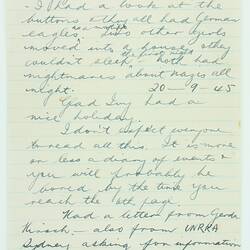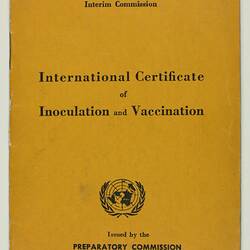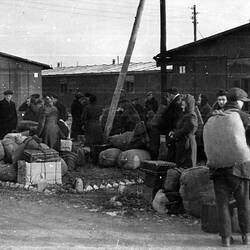Summary
Letter written by Esma Banner, 7 December 1945, describing cultural traditions practised by the displaced persons in the camps where Esma Banner worked and visited. She describes a concert she attended and an exhibtion of craft made by Latvian Displaced Persons in Lohengrin, including being presented a pair of handmade mittens. Esma also writes about the relationships between co-workers at UNRRA.
Esma Banner worked in displaced persons' camps in the US Zone of Germany after World War II as an employment and welfare officer for the United Nations Relief and Rehabilitation Administration (UNRRA) and the International Refugee Organization (IRO), from 1945 to 1951. Esma was one of 39 Australians who went to Germany to assist with post-war repatriation and re-settlement of refugees displaced by the war. More than 1000 displaced persons' camps were established by the Allied Forces. Initially created as temporary processing centres, the camps became longer term sites of accommodation, employment, education and recreation for refugees who could not, or did not want to, be repatriated to their countries of origin.
Physical Description
23 page handwritten and single sided letter, with staple in the top left hand corner.
Significance
The Esma Banner World War II UN Worker Collection is an extensive and diverse collection of objects, documents, photographs and archival material which explores the experiences of an Australian woman working for the United Nations assisting in the relief and rehabilitation of millions of displaced people in Europe after World War II. Esma Banner served with the United Nations Relief and Rehabilitation Administration (UNRRA) and later with the International Refugee Organization (IRO) at displaced persons' camps in Germany from 1946 to 1951. She was one of fewer than 40 Australians employed by UNRRA and IRO during this period.
This collection recounts the often untold story of immigration from the perspective of a migration worker and enables the documentation of many themes relating to post World War II migration including life in the displaced person camps, international refugee management, creativity and cultural maintenance, and the political complexities of post-war resettlement. Of particular note are the craft items created by refugees living in displaced persons' camps. This collection holds a variety of men's and women's work, thus providing a significant insight into life within the camps. These objects also serve as valuable examples of cultural practices and traditional skills.
This collection and accompanying documentation presents a unique perspective of the post-World War II relief effort. Esma's diaries and letters in particular offer her personal insights and observations and demonstrate how civilians contributed to the reconstruction effort in Europe. In addition, these items add to the emerging collections of material describing women's involvements during times of conflict, as well as the larger narratives that illustrate Australia's wartime experience. After World War II hundreds of thousands of homeless, stateless or displaced people lived in camps before resettling in Western countries including Australia. This collection retains ongoing cultural relevance to these large migrant communities across Victoria and Australia. With the population of post-war displaced persons' survivors aging, the collection contributes to preserve their stories and experiences as part of a greater Australian migration narrative.
More Information
-
Collection Names
-
Collecting Areas
Migration & Cultural Diversity, Working Life & Trades, Home & Community
-
Acquisition Information
Donation from Helen Fitzgerald, 14 Aug 2012
-
Author
-
Organisation Named
United Nations Relief & Rehabilitation Administration (UNRRA), Munich, Germany, 04 Dec 1945 - 07 Dec 1945
-
Inscriptions
First page, black ink: 'written on by Madge 18-5-06' First page, blue ink: '4-12-45 / Dear All, [extensive text] Page 14: [extensive text] 7-12-45 [extensive text] Page 19: 'Sorry, there is a lot left out here. At this point I began thinking about things and then went straight on as if I had written those things.' Page 21: [extensive text] 9-12-45 [extensive text] Last page: [extensive text] Esma'
-
Classification
Migration, Processing - immigration selection, Refugee camps
-
Category
-
Discipline
-
Type of item
-
Overall Dimensions
110 mm (Width), 209 mm (Height)
-
Keywords
Immigration, Immigration Policies, Migration & Settlement, Displaced Persons, Displaced Persons Camps, Wars & Conflicts, Concerts, Crafts, World War II, 1939-1945, Immigration Selection, Hand Knitting, Handcrafts, Cultural Identity, Cultural Maintenance, Cultural Traditions, National Identity, National Costumes, Clothing Accessories, Refugees
